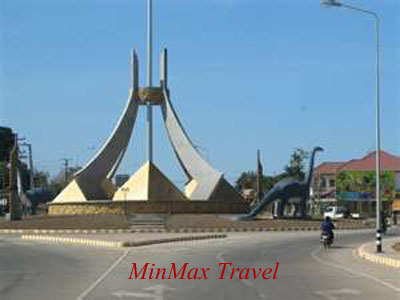Savannakhet
The slowly crumbling colonial-era buildings of Savannakhet serve as reminders of the importance the French attached to what was their largest trading and administrative centre south of Vientiane. These days the city’s  riverside centre retains a languid ambience, with tall trees shading French-era buildings that are unfailingly appealing despite their evermore forlorn appearance. Unfortunately many of these buildings will be lost in the coming years; the government is unsentimental about such colonial reminders and is unlikely to start spending money on their upkeep.
riverside centre retains a languid ambience, with tall trees shading French-era buildings that are unfailingly appealing despite their evermore forlorn appearance. Unfortunately many of these buildings will be lost in the coming years; the government is unsentimental about such colonial reminders and is unlikely to start spending money on their upkeep.
While central Savannakhet can seem a little like the land that time forgot, change is expected to come more quickly now that Laos’s third bridge across the Mekong has been completed. The city’s traditional role as a hub of trade between Vietnam and Thailand should grow, while the busy riverfront will likely become much slower. Which is a pity, because the trucks, customs office, overloaded merchants, labourers playing petang (Lao pétanque) between jobs, food and drink stalls and general hubbub of the border was one of the most attractive aspects of the city. That’s progress.
Outside the centre, Savannakhet (officially known as Muang Khanthabuli but more commonly known simply as Savan) is growing fast. The large and lively Talat Savan Xai (Th Sisavangvong; 7am-5pm), north of the centre near the bus terminal, is the centre of much of the city’s commerce.
Savannakhet is on a simple north–south grid and is pretty easy to navigate on foot.
Source: http://www.lonelyplanet.com

